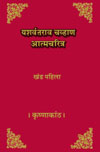Economic Policy for Maharashtra
A. B. BHAT
M.Com., M.L.C., Poona
THE State of Maharashtra is considered an economically advanced State. Its per capita income in 1957-58 was Rs. 342 while the national average was Rs. 290. The composition of the State income shows that nearly 24 per cent of it is derived from mining, manufacturing and small enterprises and another 22 per cent from commerce, transport and communications. Per capita power consumption for the State as a whole is 71 units as against 31 for the country. The percentage of factory workers to total urban population is 7 per cent as against 5 per cent for the Indian Union. This favourable position is due to the enormous development of commerce and industry within a small area of 111 square miles comprising Greater Bombay. In the areas outside Greater Bombay, whatever economic development has taken place, it is in and round about a few cities and industrial townships. The rest of the State is industrially and commercially as backward as any other in the Indian Union. So far as agriculture is concerned the State of Maharashtra is handicapped. Not only the percentage of cropped area under irrigation is small at present but there is an inevitable limitation on its future expansion also. At present only 6.31 per cent of the gross cropped area is under irrigation but it has been computed that in spite of the best efforts hereafter to utilise river and underground water resources, the area under irrigation is not likely to exceed 20 per cent. It is estimated that as against a deficit of 16 lakhs of tons in cereals at the end of this year, the State will be faced with a shortage of 25 lakhs of tons at the end of the Third Five-Year Plan.
A Complex Problem
2. This poses a complex problem for our State Planners. Agriculture which is a principal occupation of major section of the people of the State is responsible for 37 per cent of the State income. It is clear, that agriculture as a whole cannot be a source of per capita surplus production. The economy of the preponderating majority of land holders is a deficit one. The holdings are too small and a large majority of them would not turn economic in spite of investment that may be made to improve the basic productivity of land. Further, there is a very large number of landless workers and it is not likely to be reduced to any appreciable extent in spite of the ceiling on land holdings and consequent distribution of surplus land, as also, of cultivable waste land. Compulsory consolidation of holdings will only add to the ranks of landless labour. Land is a factor of production, the availability of which is physically limited. Therefore an all-out effort will have to be made to find additional avenues of employment for those who are at present sticking to agriculture as a means of their livelihood out of helplessness. A lesson of economic history has been that it is the development of industry and increase in its productive efficiency that leads to the employment of modern technique in agriculture and consequently leads to increased production.
























